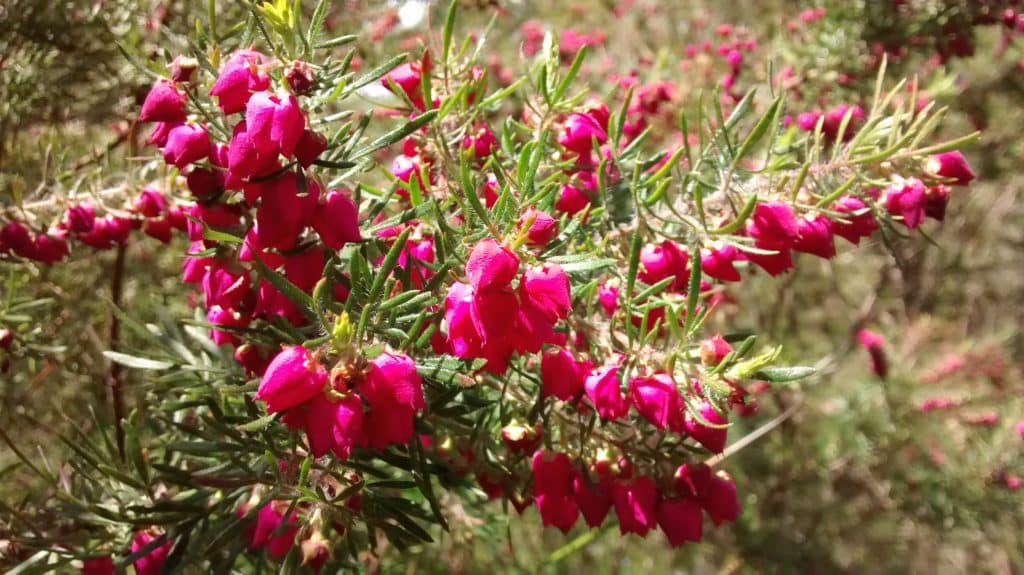#WomeninBotany
In November we looked at plants named after famous men, this month in the interest of equality we’ll look at famous women, mostly botanists, who have loaned their names to plants.

Dianella Revoluta
No doubt all legends in their own right but Diana, Goddess of wild animals lends her name to the Australian genus Dianella, so if your partner is a Dianne or Diana there’s a good Christmas present idea (she was also mistress of the hunt and handy with a bow so I’m not sure how all that works out, maybe it’s best you don’t take relationship advice from me)
Dr Barbara Briggs, has had a long and distinguished career with the National Herbarium in Sydney as a botanist, has published 205 new plant names and has had a number of plants being named recognising her contributions, including Darwinia bridggsiae and Lomandra briggsiana.

Swainsona thompsoniana
Joy Thompson, starting at the National Herbarium in 1946 and still undertaking research till 2009 a keen interest in alpine and sub alpine plants and the Fabaceae family Joy was one of the authors of Flora of NSW, publishing around 90 new species. Agrostis thompsoniae, Juncus thompsonianus, Oxalis thompsoniae, Pycnosorus thompsonianus and Swainsona thompsoniana were named in her honour.

Boronia molloyae
Georgiana Molloy (1805-1843), in October 1829 sailed to Western Australia with her new Husband Captain John Molloy and eight servants (yes, 8) settling in Augusta just south of Margaret River, Georgiana was a keen gardener and eventually was sending seeds, pressed plants specimens and descriptions back to England. Boronia molloyae is named in her honour.
Joycea pallida (Red Anther Wallaby Grass) had been named after Joyce Vickery, unfortunately it has now been reclassified as Rytidosperma pallidum. During her career Dr Vickery did a lot of work in the Barrington Tops and Upper Williams Valley and was also involved in a little forensic botany leading to a conviction in a kidnapping and murder case in 1961, she was also a staunch campaigner for equal pay. Dr Vickery is still remembered in the endangered Lasiopetalum joycea.

Lepidosperma curtisiae
Dr Winifred Mary Curtis, born in England in 1905 and despite being one of the top students in University College, London had difficulty gaining employment in her chosen field ao studied for her teachers certificate and taught at a girls High School in Manchester undertaking research into botany in her spare time, eventually earning her Master’s degree in 1939. Later that year Curtis and her parents migrated to Hobart, Tasmania where she gained a part time position at the University eventually gaining a full time position and a 27 year career at the University, she was still undertaking research and writing into her 90’s. Juncus curtisiae, Colobanthus curtisiae, Viola curtisiae, Epacris curtisiae, Lepidosperma curtisiae are named in her honour.
For a little local flavour Persoonia katerae is named after Hunter local, Penny Kater, the type specimen being found by Peter Weston at the Kater’s holiday house on the lower north coast.
Women have contributed much to botany (probably more than any other science) and there are many others I haven’t mentioned due to time constraints however for some good resources:

